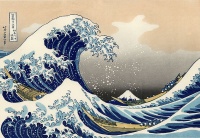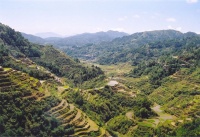Asia
From The Art and Popular Culture Encyclopedia
| Revision as of 15:43, 4 November 2022 Jahsonic (Talk | contribs) ← Previous diff |
Revision as of 15:44, 4 November 2022 Jahsonic (Talk | contribs) Next diff → |
||
| Line 3: | Line 3: | ||
| {| class="toccolours" style="float: left; margin-left: 1em; margin-right: 2em; font-size: 85%; background:#c6dbf7; color:black; width:30em; max-width: 40%;" cellspacing="5" | {| class="toccolours" style="float: left; margin-left: 1em; margin-right: 2em; font-size: 85%; background:#c6dbf7; color:black; width:30em; max-width: 40%;" cellspacing="5" | ||
| | style="text-align: left;" | | | style="text-align: left;" | | ||
| - | "As for our invincible ignorance of [[Asia|Eastern languages]], it enables us to be grateful for the labours of such men as [[Herbert Giles|Giles]], [[Richard Francis Burton|Burton]], [[Edward William Lane|Lane]], [[Arthur Waley|Waley]], and [[Scholem]]."--''[[Book of Imaginary Beings]]'' (1957) by Jorge Luis Borges | + | "As for our invincible ignorance of [[Asia|Eastern languages]], it enables us to be grateful for the labours of such men as [[Herbert Giles|Giles]], [[Richard Francis Burton|Burton]], [[Edward William Lane|Lane]], [[Arthur Waley|Waley]], and [[Gershom Scholem|Scholem]]."--''[[Book of Imaginary Beings]]'' (1957) by Jorge Luis Borges |
| |} | |} | ||
| [[Image:Roots.JPG|thumb|200px|right|Roots of a ''[[Tetrameles nudiflora]]'' [[tree]] at an abandoned [[temple]] in [[Cambodia]]. [[Maurice Glaize]] observed, "On every side, in [[fantastic]] over-scale, the trunks of the silk-cotton trees soar skywards under a shadowy green canopy, their long spreading skirts trailing the ground and their endless roots coiling more like [[reptile]]s than [[plant]]s."]] | [[Image:Roots.JPG|thumb|200px|right|Roots of a ''[[Tetrameles nudiflora]]'' [[tree]] at an abandoned [[temple]] in [[Cambodia]]. [[Maurice Glaize]] observed, "On every side, in [[fantastic]] over-scale, the trunks of the silk-cotton trees soar skywards under a shadowy green canopy, their long spreading skirts trailing the ground and their endless roots coiling more like [[reptile]]s than [[plant]]s."]] | ||
Revision as of 15:44, 4 November 2022
|
"As for our invincible ignorance of Eastern languages, it enables us to be grateful for the labours of such men as Giles, Burton, Lane, Waley, and Scholem."--Book of Imaginary Beings (1957) by Jorge Luis Borges |

|
Related e |
|
Featured: |
Asia is the world's largest and most populous continent, located primarily in the eastern and northern hemispheres. It covers 8.7% of the Earth's total surface area and comprises 30% of its land area. With approximately 4.3 billion people, it hosts 60% of the world's current human population. Asia has a high growth rate in the modern era. For instance, during the 20th century, Asia's population nearly quadrupled.
The boundaries of Asia are culturally determined, as there is no clear geographical separation between it and Europe, which together form one continuous landmass called Eurasia. The most commonly accepted boundaries place Asia to the east of the Suez Canal, the Ural River, and the Ural Mountains, and south of the Caucasus Mountains (or the Kuma–Manych Depression) and the Caspian and Black Seas. It is bounded on the east by the Pacific Ocean, on the south by the Indian Ocean and on the north by the Arctic Ocean.
Given its size and diversity, the concept of Asia – a name dating back to classical antiquity - may actually have more to do with human geography than physical geography. Asia varies greatly across and within its regions with regard to ethnic groups, cultures, environments, economics, historical ties and government systems.
Culture
The culture of Asia is the artificial aggregate of the cultural heritage of many nationalities, societies, religions, and ethnic groups in the region, traditionally called a continent from a Western-centric perspective, of Asia. The region or "continent" is more commonly divided into more natural geographic and cultural subregions, including the Central Asia, East Asia, South Asia (the "Indian subcontinent"), North Asia, West Asia and Southeast Asia. Geographically, Asia is not a distinct continent; culturally, there has been little unity or common history for many of the cultures and peoples of Asia.
Asian art, music, and cuisine, as well as literature, are important parts of Asian culture. Eastern philosophy and religion also plays a major role, with Buddhism, Hinduism, Taoism, Confucianism, Islam, and Christianity all playing major roles. One of the most complex parts of Asian culture is the relationship between traditional cultures and the Western world.
Nobel prizes
The polymath Rabindranath Tagore, a Bengali poet, dramatist, and writer from Santiniketan, now in West Bengal, India, became in 1913 the first Asian Nobel laureate. He won his Nobel Prize in Literature for notable impact his prose works and poetic thought had on English, French, and other national literatures of Europe and the Americas. He is also the writer of the national anthems of Bangladesh and India.
Other Asian writers who won Nobel Prize for literature include Yasunari Kawabata (Japan, 1968), Kenzaburō Ōe (Japan, 1994), Gao Xingjian (China, 2000), Orhan Pamuk (Turkey, 2006), and Mo Yan (China, 2012). Some may consider the American writer, Pearl S. Buck, an honorary Asian Nobel laureate, having spent considerable time in China as the daughter of missionaries, and based many of her novels, namely The Good Earth (1931) and The Mother (1933), as well as the biographies of her parents of their time in China, The Exile and Fighting Angel, all of which earned her the Literature prize in 1938.
Also, Mother Teresa of India and Shirin Ebadi of Iran were awarded the Nobel Peace Prize for their significant and pioneering efforts for democracy and human rights, especially for the rights of women and children. Ebadi is the first Iranian and the first Muslim woman to receive the prize. Another Nobel Peace Prize winner is Aung San Suu Kyi from Burma for her peaceful and non-violent struggle under a military dictatorship in Burma. She is a nonviolent pro-democracy activist and leader of the National League for Democracy in Burma(Myanmar) and a noted prisoner of conscience. She is a Buddhist and was awarded the Nobel Peace Prize in 1991. Most recently, Chinese dissident Liu Xiaobo was awarded the Nobel Peace Prize for "his long and non-violent struggle for fundamental human rights in China." He is the first Chinese citizen to be awarded a Nobel Prize of any kind while residing in China.
Sir C. V. Raman is the first Asian to get a Nobel prize in Sciences. He won the Nobel Prize in Physics "for his work on the scattering of light and for the discovery of the effect named after him".
Amartya Sen, (born 3 November 1933) is an Indian economist who was awarded the 1998 Nobel Memorial Prize in Economic Sciences for his contributions to welfare economics and social choice theory, and for his interest in the problems of society's poorest members.
Other Asian Nobel Prize winners include Subrahmanyan Chandrasekhar, Abdus Salam, Robert Aumann, Menachem Begin, Aaron Ciechanover, Avram Hershko, Daniel Kahneman, Shimon Peres, Yitzhak Rabin, Ada Yonath, Yasser Arafat, José Ramos-Horta and Bishop Carlos Filipe Ximenes Belo of Timor Leste, Kim Dae-jung, and 13 Japanese scientists. Most of the said awardees are from Japan and Israel except for Chandrasekhar and Raman (India), Salam (Pakistan), Arafat (Palestinian Territories) Kim (South Korea), Horta and Belo (Timor Leste).
In 2006, Dr. Muhammad Yunus of Bangladesh was awarded the Nobel Peace Prize for the establishment of Grameen Bank, a community development bank that lends money to poor people, especially women in Bangladesh. Dr. Yunus received his PhD in economics from Vanderbilt University, United States. He is internationally known for the concept of micro credit which allows poor and destitute people with little or no collateral to borrow money. The borrowers typically pay back money within the specified period and the incidence of default is very low.
The Dalai Lama has received approximately eighty-four awards over his spiritual and political career. On 22 June 2006, he became one of only four people ever to be recognized with Honorary Citizenship by the Governor General of Canada. On 28 May 2005, he received the Christmas Humphreys Award from the Buddhist Society in the United Kingdom. Most notable was the Nobel Peace Prize, presented in Oslo, Norway on 10 December 1989.
See also
Special topics:
- Asian cinema
- Asian Century
- Asian cuisine
- Asian furniture
- Asian Games
- Asian Monetary Unit
- Asian people
- Eastern world
- Far East
- East Asia
- Southeast Asia
- South Asia
- Central Asia
- Fauna of Asia
- Flags of Asia
- Middle East
- Pan-Asianism




